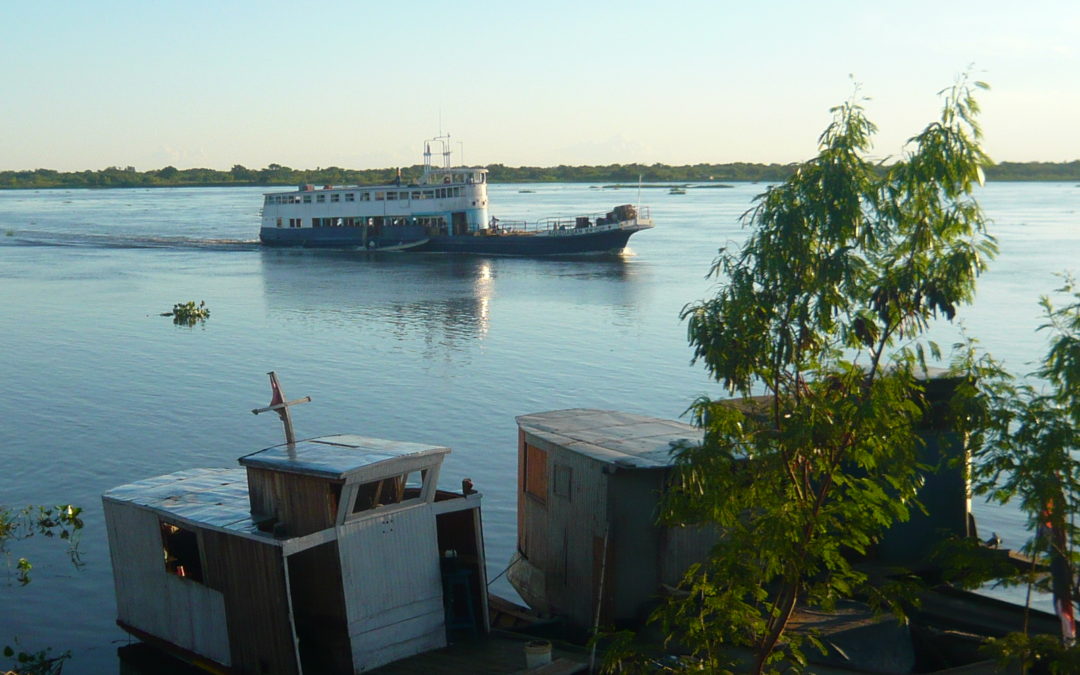The city of Concepcion sits on the east bank of the Rio Paraguay approximately 300km north of Asuncion. it is the largest city in Northern Paraguay and was founded by Agustin Fernando de Pinedo in 1733.
The city as well as being the commercial and cultural center for the surrounding area is also a transport hub. From Concepcion the Rio Paraguay continues north through the Pantanal and onto Brazil. Additionally 9km south of the city a bridge carries the road over the river. From there the road continues across the Chaco and onto Bolivia.
The port of Concepcion is a major stopping off point along the Rio Paraguay receiving shipping from both north and south. The port itself is far from modern but is fully functional with much of its produce being transported by river. When I visited I watched cargo vessels being unloaded by hand into wooden barrows to be deposited in lorries that waited nearby.
More than just cargo the port also deals in people. Most of the cargo vessels have deck space for a passenger or two. Furthermore a small number of tourist boats ply the waters. Either transporting visitors to and from Asuncion or northwards into the Pantanal in search of the wildlife that inhabits the wetlands.
The city itself is know as La Pearla del Norte, the pearl of the north. It is a well kept place with many fine colonial era buildings. There are a number of good quality museums in the city such as the Municipal History Museum, the Military Museum and the Museum of Sacred Art. There are also a number of well laid out plazas such as the Plaza Libertad.
The Cathedral de Nuestra Senora de la Concepcion is modern in date but built in classical styles. It was built between 1960 and 1968 and is a bright building decorated in yellow and white. Inside the carved wooden altar piece depicting soldiers and angels recalls the central role played by Concepcion during the Chaco War.
Not all the museums of Concepcion are confined within buildings. The Museo de Aire Libre runs down the center of city streets for all to see. This museum recalls Concepcions industrial past. It consists of tractors, trains, cars and machinery rescued from dereliction in Concepcion and the surrounding areas. Most if not all were made abroad and a number still display the plaques from the British factories where they were produced.
These industrial monuments are however dwarfed by a religious one. This is the massive white statue of Maria Auxilladora and the Christ Child which stands on the cities main street. The statue is 24 metres high and from a lookout platform at the statues feet gives a fine view out over the city. This like the cathedral is not old having been erected in 2002.
The area around Concepcion is on the whole fairly level. Warm temperatures and sufficient rain make it ideal farming country. Large quantities of both crops and beef are produced. Much of this is done on large estancias or ranches some of which cover hundreds of acres.
For these businesses as well as tourists visiting the town the port of Concepcion and the main road from there to Asuncion are their means of entry into and out of the city.
A boat to Asuncion takes the best part of a day but a relatively inexpensive bus covers the same distance in a few hours. Then one in Concepcion there are a number of tourist hotels available to serve as a base from which to explore the city and the river.


Recent Comments